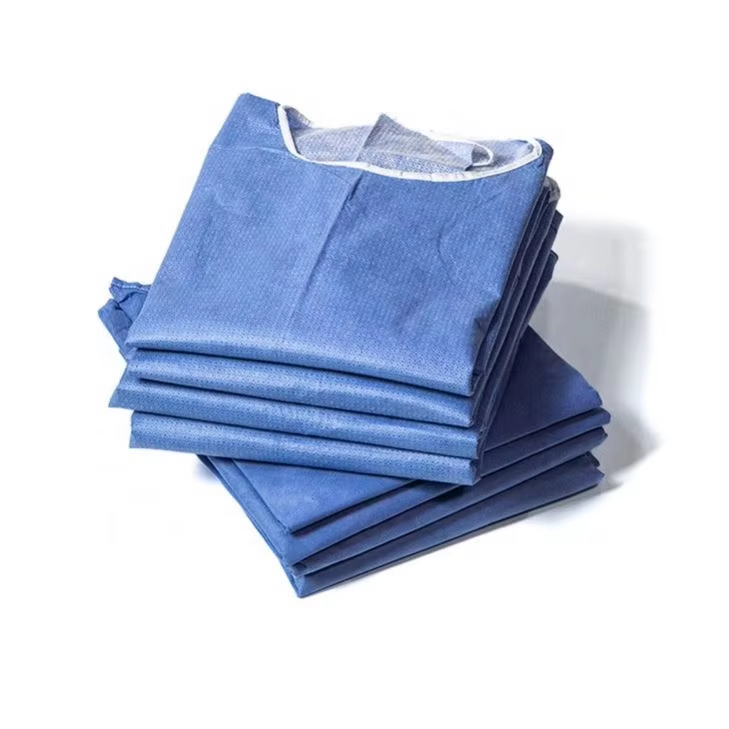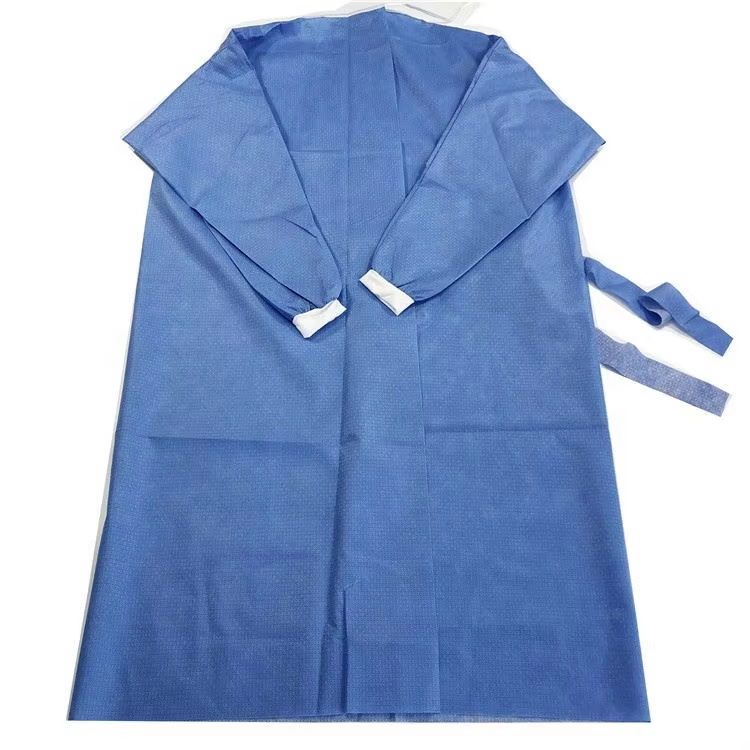Contact Info
200 meters east of Xihuang Village Committee, Linchi Town, Zouping City, Binzhou City, Shandong Province (China)
A gown acts as a critical and protective barrier that inhibits the flow of harmful substances between patients and staff. This is the basis of its protective function. In a clinical setting, staff members may have to provide care to a patients and come into contact with bodily fluids such as blood or saliva. A protective gown is intended to shield the staff members torso, arms, and, in some cases, a portion of the legs in order to prevent these fluids from contacting the skin or clothing. In the case of patients such as those undergoing chemotherapy, the gown is further intended to protect staff from outer pathogens preventing staff from transmitting harmful bacteria or viruses from other rooms into the patient area. Mepromedical, a provider of professional medical supplies, ensured that its gowns provide complete and gapless coverage ensuring that the protective barrier is maintained during movement, such as bending or lifting. This very basic and essential function of the gown protects both patients and staff from direct cross-contamination.
The gown's fluid resistant cover is critical to the enhancement of its protective effect as it helps in the cover against the risks of liquid-borne pathogens which may still be transmitted.

Regular fabric can absorb bodily fluids which can let germs get through to the skin, but Mepromedical’s gowns use specially treated non-woven fabric or coated materials that keep liquids away. When a liquid such as blood or medicine spills, the fabric keeps the liquid from soaking in, keeping the skin underneath the gown dry and clean. For instance, during gown worn for a patient’s wound care, if blood accidentally splatters, the gown’s liquid-resistant layer keeps the staff’s clothing from being contaminated and also keeps the patient safe from any germs that might be on the staff’s clothing. This makes the gowns a better protective item because it ensures staff and patients will not exchange infections through liquids.
Each gown’s breathable design ensures staff comfort which is key in preserving the gown protective function during the long hours. This is particularly important for staff who wear gowns for 8 hours or more. If a gown is airtight, staff may sweat excessively, leading to discomfort and skin irritation which could make them move the gown in ways that disrupt the protective function of the gown by exposing the inner clothing.
Mepromedical’s gowns are designed with breathable fabrics that permit air circulation while maintaining fluid resistance. This allows staff to be breathable and comfortable during long shifts without any reduction in the protection provided by the gown. For patients in isolation who need to wear breathable gowns, the design helps to reduce the risk of overheating which can aid in the maintenance of comfortable physical state. This is very important in cases of patients in isolation. A comfortable breathable gown will encourage patients and staff to wear the gown properly and completely without gaps in protection.
Sterile gowns are designed to provide specialized protection for high-risk medical procedures which include surgeries or invasive procedures that come with a high risk for infections. These gowns are made and maintained through stringent sterilization systems of ethylene oxide sterilization which diminishes all the pathogens to a point of no return on the gown surface and ensures that no harmful microorganisms will enter the sterile field. For surgical staff, wearing a sterile gown is a requirement to prevent their skin or cloth from polluting the patient’s surgical site which in turn diminishes the risk of infection post the surgery. For patients, a sterile gown provides peace of mind to know the medical personnel will not be exposing them to outside micro bacteria during vulnerable procedure.

Mepromedical has mark sterile oncological gowns that abide by international standards of sterilization, including the marking of expiration dates, and labeling for sterilization and expiration. In high-risk situations, these gowns are essential as they provide an added level of protection that non-sterile gowns are incapable of providing. This protection is vital in safeguarding all patients and medical personnel in crucial moments of care.
Overlooked, the ease of putting on and taking off a gown is essential in sustaining protection. One of the most important components of protective gown wearing is the taking off. Should a gown be hard to take off, a staff member may rush and leave gaps. In gowns with easy donning, staff may have to impulsively discard a foe of donned outer surface of the gown, risk transferring pathogens. Mepromedical gowns have systems of snapped fasten, tie-back closures of adhesive strips that permit staff, even gloved and in a hurry, to dramatically put on the gown. In systems, the outer contaminated layer of the gown is folded in towards the bod. An even system permits the gowned staff to cover a patient with a contaminated gown.
The design offers complete protection from the moment the gown is donned until it is appropriately disposed of.
Mepromedical recognizes the dual protective role of the gown for the patients and the staff and offers an array of gown solutions for varying medical requirements. The range includes everyday standard fluid-resistant gowns for daily care, breathable gowns for extended shifts, sterile gowns for surgery, and comfortable patient gowns. All these products prioritize protection while considering the ease of use. The company performs rigorous quality assessments on these gowns, including fluid resistance, breathability, and sterility to guarantee compliance with international medical standards. Mepromedical offers customization such as gowns with various sleeve lengths and sizes to address the assorted requirements of healthcare facilities. To find out more on how Mepromedical’s gowns provide protection for patients and staff, visit the company’s website https://www.mepromedical.com/. The professionals assist medical facilities in selecting appropriate gowning products to create safe healthcare interfaces.